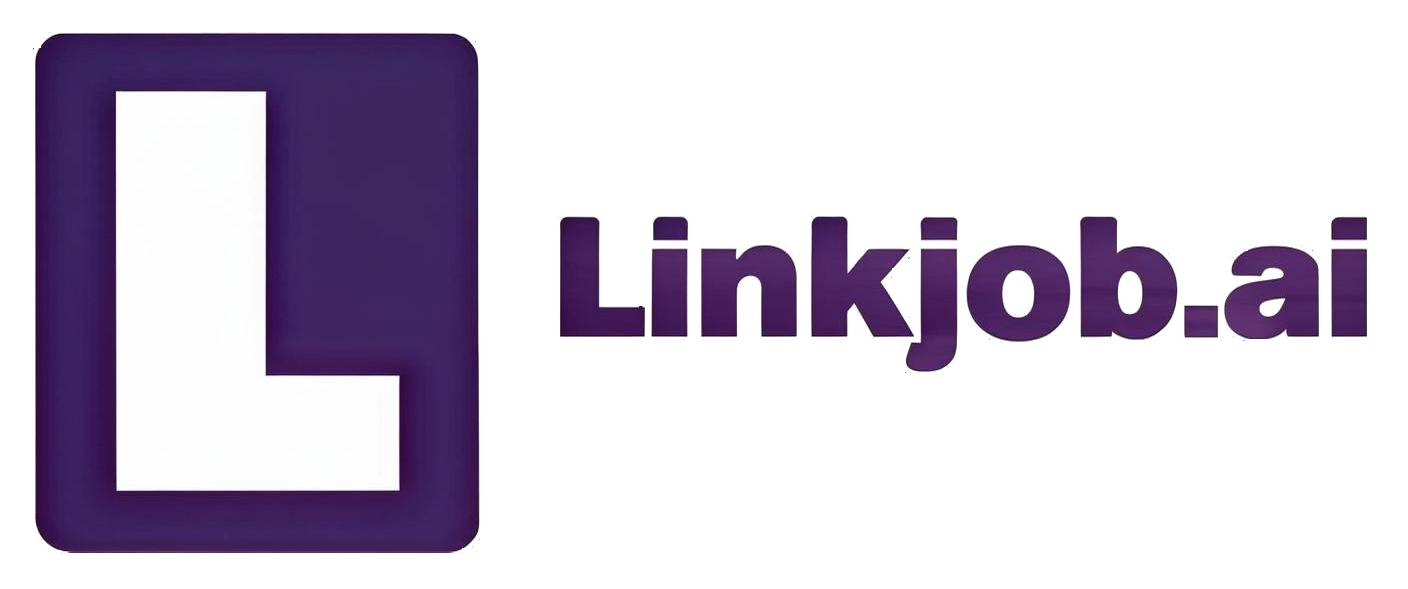My Real Selenium Automation Testing Interview Experiences from 2025 with the Exact Questions and Answers

I went through several intense selenium automation testing interview rounds in 2025. Each selenium interview tested my real skills, from selenium basics to advanced selenium components. I faced selenium automation testing interview questions that pushed me to think fast and stay calm. Real preparation made a huge difference for me. I also discovered how real-time support, like Linkjob, can boost your performance during selenium interviews. If you want to feel ready for any selenium interview, you need the right tools and mindset.
I have to say, Linkjob.ai is really incredibly useful. During the interview process, it's completely invisible—even if the interviewer requires screen sharing, the other party can't see at all that I'm using AI.
Key Takeaways
When I look back at my selenium automation testing interview journey, a few lessons stand out. If you want to succeed in a selenium interview, you need more than just technical knowledge. Let me share what really made a difference for me:
I always align my resume with the job description. This means I use the same keywords and highlight my selenium experience, especially with webdriver and frameworks like TestNG.
I talk about real projects where I used selenium to solve problems. Interviewers love hearing about actual results, like how I reduced bug rates or improved testing speed.
I make sure to show my skills with selenium tools, webdriver, and programming languages like Java or Python. I also mention any certifications I have in automation testing.
I never forget to mention teamwork. Working with cross-functional teams is a big part of most selenium roles, so I share examples of how I communicate and collaborate.
I use numbers to show my impact. For example, I might say, “I improved test coverage by 30% using selenium webdriver.”
I always prepare for Selenium questions about handling dynamic elements, flaky tests, and script maintainability. These topics come up in almost every selenium interview.
I practice explaining my approach to test case selection and automation frameworks. Interviewers want to see that I understand both the big picture and the details.
Tip: Mastering webdriver basics and Selenium's advanced interview topics builds confidence. When I know how to handle browser windows, element locators, and cross-browser testing, I feel ready for any interview challenge.
I also spend time on personal projects with selenium. This shows my passion and helps me stay sharp. In every interview, I balance technical answers with soft skills like adaptability and clear communication. Deep preparation, real-world examples, and a focus on both selenium and webdriver topics helped me stand out.
Interview Context
Company and Role Types
When I started my selenium journey, I targeted companies that value strong automation skills. I applied to both startups and large enterprises. Some companies focused on e-commerce, while others specialized in finance or healthcare. Most roles had titles like Automation Test Engineer, QA Automation Specialist, or Selenium WebDriver Engineer. Each company wanted someone who could design, build, and maintain selenium webdriver scripts. They also looked for people who could work with frameworks and integrate selenium tests into CI/CD pipelines. I noticed that companies often preferred candidates with hands-on experience in selenium webdriver, especially those who could handle complex test scenarios.
Interview Formats
The interview formats varied a lot. Some companies started with a phone screen, where I answered basic selenium and webdriver questions. Others sent me a coding challenge that tested my ability to write selenium webdriver scripts. In-person interviews usually included a mix of technical questions, live coding, and scenario-based discussions. I often had to explain how I would automate a login page or handle dynamic elements using selenium webdriver. Sometimes, I joined panel interviews with multiple interviewers. These sessions tested my communication skills and how well I could explain my selenium approach.
Tip: Practice live coding with selenium webdriver before your interview. It helps you stay calm and show your skills under pressure.
My Preparation Approach
I always start by reviewing the job description and matching my skills to the requirements. I analyze the current testing process and look for areas that could benefit from selenium automation. I choose selenium webdriver because it works well with most web applications and has strong community support. My preparation includes:
Identifying repetitive and high-risk tests for automation with selenium webdriver.
Building modular and reusable Selenium WebDriver test cases to reduce testing time and effort
Testing scripts on real browsers and devices to catch issues early.
Integrating selenium webdriver tests with CI/CD tools for fast feedback.
Keeping my test scripts updated as the application changes.
Practicing with open-source tools and joining selenium forums for tips.
I also help manual testers learn selenium webdriver, which builds a stronger team. My focus stays on clear goals, regular practice, and continuous learning.
Selenium WebDriver Interview Questions

WebDriver Basics
I always start my selenium automation testing interview questions prep with the basics. Interviewers often ask, “What is selenium webdriver?” I answer, “Selenium webdriver is an open-source tool that automates browsers. It lets me write scripts in languages like Java or Python to interact with web elements.” Another common selenium interview question is, “How do you locate elements in selenium webdriver?” I mention strategies like ID, name, XPath, and CSS selectors. Sometimes, I get questions about launching browsers. I explain how I use webdriver classes like ChromeDriver or FirefoxDriver to open browsers and run tests.
Tip: Practice these selenium webdriver basics until you can answer quickly. Mock interviews with Linkjob help me get instant feedback and improve my answers.
WebDriver Intermediate Scenarios
Selenium automation testing interview questions often move to real-world scenarios. One interviewer asked, “How do you handle dynamic elements in selenium webdriver?” I say, “I use explicit waits and dynamic locators to interact with elements that change.” Another selenium interview question is, “How do you manage test data?” I share how I prepare application state before running tests, sometimes using APIs to create or clean up data. This keeps my selenium webdriver tests stable and predictable.
I also learned that using BDD frameworks with a domain-specific language helps me write selenium webdriver tests in a clear, business-readable format. Mocking external services and avoiding shared state between tests make my selenium automation testing interview questions easier to answer because my tests stay reliable.
Prepare test data before tests run.
Use BDD for readable selenium webdriver scripts.
Mock services to avoid flaky tests.
Keep tests isolated for easier debugging.
WebDriver Advanced Techniques
Advanced selenium automation testing interview questions can get tricky. I’ve been asked, “How do you handle multiple browser windows or tabs in selenium webdriver?” I answer, “I use the getWindowHandles() method to switch between windows.” Another tough selenium interview question is, “How do you capture screenshots on test failure?” I explain how I use the TakesScreenshot interface in selenium webdriver to save screenshots for debugging.
Selenium Framework Questions
Framework Design
When I walk into a selenium interview, I know the questions about framework design will come up fast. Interviewers want to see if I understand why a test automation framework matters. I always say, "A good selenium framework gives me code reusability, easy maintenance, and scalability." Here are the most common selenium interview questions I get about framework design:
What is a test automation framework and why do we need it?
What types of frameworks can you build with selenium?
What are the key components of a strong selenium framework?
How do you manage dependencies and configuration?
How do you handle cross-browser testing in your framework?
I always mention that a solid selenium framework includes a base class, configuration files, utility classes, page objects, test cases, and a reporting mechanism. I use Maven or Gradle to manage dependencies. For cross-browser testing, I rely on Selenium Grid or cloud platforms. These tools help me run tests across different browsers and operating systems.
Tip: When you answer selenium interview questions about framework design, share real examples from your projects. Show how your framework supports cross-browser testing and data-driven testing.
Page Object Model
Page Object Model (POM) always comes up in selenium interview questions. I explain that POM is a design pattern that breaks the application into modules. Each module focuses on one part of the UI. This makes my code reusable and easy to maintain. When I use POM, I keep all my UI locators in one place. If something changes, I update it once and all my tests stay up to date.
POM helps me avoid code duplication.
I can isolate failures, so one broken page does not affect other tests.
My tests become more readable and easier to debug.
I love how POM lets me turn UI actions into reusable components. This makes my selenium framework strong and flexible. I always mention this when answering selenium interview questions about framework design.
Data-Driven Testing
Data-driven testing is a hot topic in selenium interview questions. I get asked how I handle test data in my selenium framework. I say, "I use properties files, Excel sheets, or JSON files to store test data." This lets me run the same test with different data sets. My tests become more powerful and flexible.
Here’s how I approach data-driven testing:
I separate test logic from test data.
I use tools like Apache POI for Excel or built-in Java libraries for JSON.
I make sure my selenium framework supports data-driven testing for cross-browser testing too.
Data-driven testing helps me catch more bugs and makes my selenium interview questions easier to answer. I always show how my framework supports both data-driven testing and cross-browser testing. This proves I can handle real-world challenges in selenium automation.
Selenium Interview Questions: CI/CD Integration
Jenkins and GitHub Actions
When I started working with selenium, I realized that companies want to see how I use selenium webdriver in CI/CD pipelines. Interviewers often ask, “How do you run selenium webdriver tests in Jenkins or GitHub Actions?” I tell them I set up jobs in Jenkins to trigger selenium webdriver scripts after every code push. I use GitHub Actions to do the same thing in the cloud. I always make sure my selenium webdriver tests run in headless mode so they work on servers without browsers. I also connect selenium webdriver with reporting tools, so I get clear results after every run.
Tip: Practice setting up a simple Jenkins pipeline that pulls code, runs selenium webdriver tests, and publishes a report. This shows you understand real-world automation.
Test Reports and Notifications
Interviewers love to ask about reporting and notifications in selenium. They want to know how I track test results and alert the team. I use tools like TestNG, JUnit, and ExtentReports with selenium webdriver. I also set up email or Slack notifications for failed selenium webdriver tests. Here’s a table of common questions I get:
Question Focus | Typical Interview Questions | Tools/Concepts Mentioned | Candidate Expectations |
|---|---|---|---|
Reporting and Logging | How do you handle reporting and logging in your Selenium test framework? | TestNG, JUnit, ExtentReports, Log4j, SLF4J | Explain setup of reporting/logging, monitoring test execution, troubleshooting |
Continuous Integration (CI) Integration | Can you explain the role of CI in Selenium test automation? How do you ensure Selenium tests are compatible with CI systems? | Jenkins, TeamCity, GitLab CI, CircleCI, headless mode | Discuss experience integrating Selenium with CI, benefits of CI, running tests in CI pipelines, reporting test results within CI |
Test Framework Setup | How to set up a Selenium test framework from scratch? What are key components of an effective framework? | Modular test scripts, reusable components, reporting and logging tools, CI/CD integration | Describe framework structure, use of reporting/logging, version control, scalability |
Debugging and Notifications | How do you approach debugging a failing Selenium test? | Logs, screenshots, debugging tools | Methodical debugging approach, use of logs and screenshots, identifying common issues |
I always explain how I use selenium webdriver logs and screenshots to help my team fix problems fast.
Troubleshooting
Troubleshooting is a big part of any selenium interview. I get questions like, “What do you do when a selenium webdriver test fails in CI?” I say, “First, I check the selenium webdriver logs and screenshots. I look for errors in the test steps or environment.” Sometimes, I find issues with webdriver versions or missing drivers. I also check if the selenium webdriver script needs more waits for dynamic elements. If I see flaky tests, I review the selenium webdriver code and update locators or waits. I always keep my selenium webdriver framework updated to avoid old bugs.
Note: Interviewers want to see a clear, step-by-step approach to fixing selenium webdriver issues. Practice explaining your troubleshooting steps out loud.
Automation Testing Challenges
Handling Dynamic Elements
When I started, dynamic elements were one of the top limitations with Selenium automation testing. Many web apps change their UI often. Sometimes, the attributes of a button or link change every time the page loads. My selenium webdriver scripts would break because the locator stopped working. I learned that selenium needs special handling for these cases. I use explicit waits like WebDriverWait to wait for elements to appear, become visible, or turn clickable. Without these waits, selenium webdriver throws errors if it tries to click something that isn’t ready. Here’s what I do:
I use
presenceOfElementLocatedto wait for elements in the DOM.I use
visibilityOfElementLocatedto make sure the element is visible.I use
elementToBeClickablefor buttons or links.
Dynamic content is a big challenge in selenium automation testing. If I don’t handle it, my selenium webdriver scripts become unreliable and need constant fixing.
Synchronization Issues
Synchronization issues pop up all the time in selenium automation testing. Sometimes, my selenium webdriver script tries to click a button before it’s ready. Other times, I get a NoSuchElementException because the element hasn’t loaded yet. I see this a lot with AJAX-heavy sites. To fix this, I rely on explicit and fluent waits in selenium webdriver. Here’s a quick table of common problems and how I handle them:
Issue | What Happens | My Solution |
|---|---|---|
Clicking before element is clickable | Test fails | Use |
Element not present in DOM |
| Use |
Flaky tests from dynamic content loading | Tests pass/fail randomly | Use fluent waits |
Unnecessary global waits | Tests run too slow | Use targeted waits |
Elements appear after variable delays | Hard to predict timing | Use polling with fluent wait |
I always remind myself that good synchronization makes selenium webdriver tests stable and fast.
Flaky Tests
Flaky tests are the nightmare of selenium automation testing. I remember running my selenium webdriver suite and seeing tests pass one day and fail the next, even when nothing changed. Most of the time, dynamic elements and poor synchronization cause these problems. Flaky tests slow down CI/CD and make it hard to trust results. To fight this, I keep my selenium webdriver locators strong, use waits wisely, and avoid hardcoded sleep statements. I also update my selenium webdriver scripts often to match UI changes. When I see a flaky test, I dig into the logs and screenshots to find the root cause. Reliable selenium automation testing means fewer surprises and more confidence in every release.
Pain Points and Solutions
Technical Deep-Dive Questions
When I sit down for a selenium interview, I know the technical deep-dive questions can get tough fast. Interviewers love to ask about real-world problems. They might ask me how I handle synchronization issues, automate file uploads, or use JavaScriptExecutor in selenium scripts. Sometimes, they want to know how I manage multiple windows, test single-page apps, or deal with browser compatibility. These questions push me to show my deep knowledge of selenium and my problem-solving skills.
Here are some of the most challenging topics I’ve faced in selenium interviews:
Handling synchronization issues and flaky tests
Performing data-driven testing
Using custom locators and exceptions
Automating drag and drop or file uploads
Integrating selenium with CI/CD pipelines
I noticed that many candidates struggle when interviewers ask about maintaining selenium scripts after UI changes. Test scripts often break when the UI changes, which means I have to update them often. This makes automation feel brittle and time-consuming.
Tip: I use Linkjob’s mock interview mode to practice these deep-dive questions. The AI asks follow-up questions based on my answers, so I get used to thinking on my feet.
Time Management Pressure
Time always feels tight during a selenium interview. I remember feeling rushed when answering questions or solving coding problems. Sometimes, I would get stuck on a tricky selenium question and lose track of time. This pressure made it hard to stay calm and focused.
I found that practicing with Linkjob helped me manage my time better. The AI simulates real interviewers and gives instant feedback. It listens to my answers, detects the questions, and suggests improvements right away. This real-time support helps me avoid mistakes and keeps me on track, even when I get unexpected selenium questions. Practicing under timed conditions with Linkjob built my confidence and helped me adapt quickly.
Here’s a quick list of how I handle time pressure:
Practice answering selenium questions with a timer
Use AI feedback to spot weak points fast
Focus on clear, direct answers
Communication Barriers with Interviewers
Sometimes, I struggle to understand what an interviewer wants. Maybe the selenium question is vague, or the interviewer uses unfamiliar terms. This can make me nervous and hurt my performance. I also noticed that some interviewers prefer different testing tools, which can make the conversation tricky if I’m more familiar with selenium.
To overcome this, I practice explaining my selenium experience in simple terms. I use Linkjob’s real-time AI assistant during mock interviews. It listens to the conversation and gives me suggestions for better answers. This helps me stay clear and confident, even if the questions are unexpected or complex.
Note: Good communication is just as important as technical skill in a selenium interview. Practicing with AI support helps me bridge gaps and show my best self.
Struggling to practice for Selenium interviews the right way? Now get real-time support even during the actual interview.
Linkjob lets you run realistic mock interviews focused on Selenium automation roles, with AI-generated questions and instant feedback to sharpen your answers.
When the real interview begins, Linkjob actively listens and offers smart, context-aware suggestions. It can even help you break down and solve programming problems on the spot, so you stay focused and in control from start to finish.
Preparation and Success Tips
Effective Practice Strategies
I always start my selenium interview prep with a clear plan. I pick real-world problems and build small selenium webdriver projects. This helps me understand how webdriver works in different situations. I write scripts that test login pages, shopping carts, and search features. I use test automation tools to run these scripts often. I also join online forums to ask questions and share my selenium experiences.
Here are my favorite practice tips:
Break big problems into small selenium webdriver tasks.
Use test automation frameworks like TestNG or JUnit.
Review selenium webdriver logs after every run.
Try to fix flaky tests right away.
Real-Time Support in Interviews
During a live interview, I sometimes feel nervous or stuck. I use Linkjob’s real-time AI assistant to help me stay calm. The AI listens to the interview and gives me suggestions for better answers. It understands selenium, webdriver, and test automation topics. This support helps me answer tough selenium interview questions quickly. I can focus on the problem instead of worrying about what to say next.
I also practice mock interviews with Linkjob. The AI asks follow-up questions based on my answers. This feels just like a real selenium interview. I get instant feedback and learn how to improve my webdriver answers.
What Interviewers Value
Interviewers want to see more than just selenium skills. They look for people who understand webdriver and test automation from end to end. They like it when I show how I solve real problems with selenium webdriver. They also want to see teamwork and good communication.
Here’s a quick table of what interviewers value most:
Skill | Why It Matters |
|---|---|
Selenium expertise | Shows deep knowledge |
Webdriver mastery | Proves hands-on experience |
Test automation | Ensures reliable testing |
Problem-solving | Handles real-world challenges |
Communication | Explains ideas clearly |
FAQ
What should I do if my Selenium WebDriver script keeps failing on dynamic elements?
I always check if the element changes after each page load. I use explicit waits to make sure the element is ready before my script interacts with it. This helps me avoid most failures.
How do I explain my Selenium project experience in interviews?
I talk about real problems I solved with Selenium. I share numbers, like how much faster my tests ran or how many bugs I found. I also mention teamwork and how I helped others learn automation.
What’s the best way to practice for Selenium automation interviews?
I build small projects and solve real problems. I use mock interviews with AI tools like Linkjob. Practicing with feedback helps me spot weak areas and improve my answers quickly.
How can I handle time pressure during technical interviews?
I set a timer when I practice questions. I focus on giving clear, short answers. If I get stuck, I move on and come back later. Practicing under time limits helps me stay calm in real interviews.
What do interviewers look for besides technical skills?
Interviewers want to see problem-solving, clear communication, and teamwork. I always share stories that show how I work with others and handle challenges. This makes my answers stand out.

